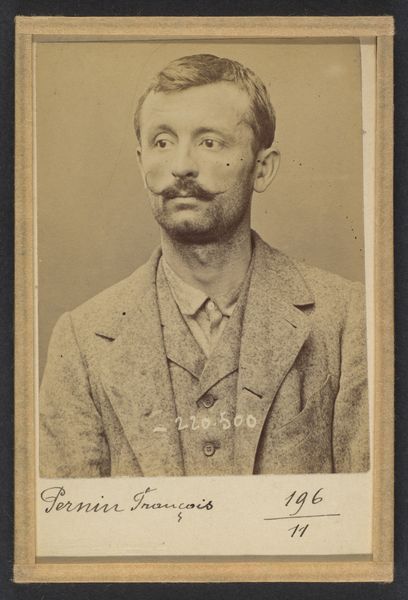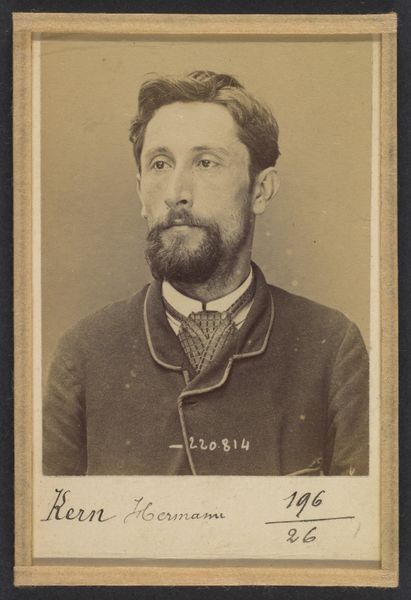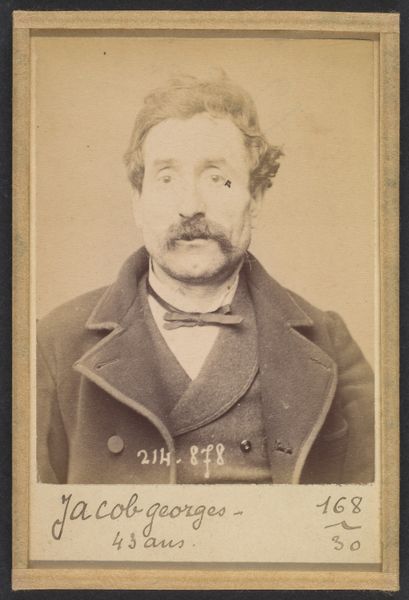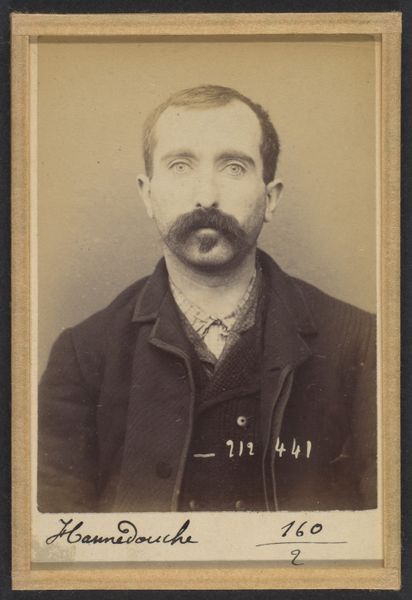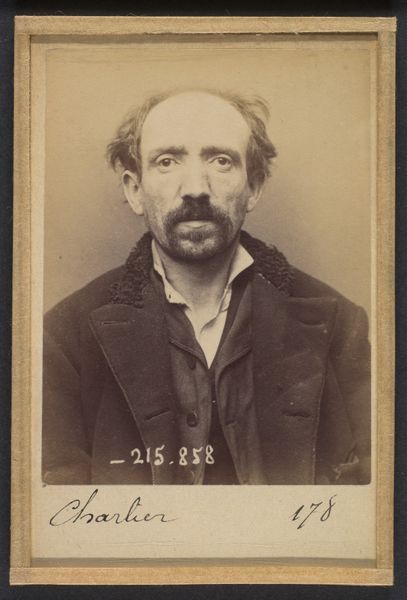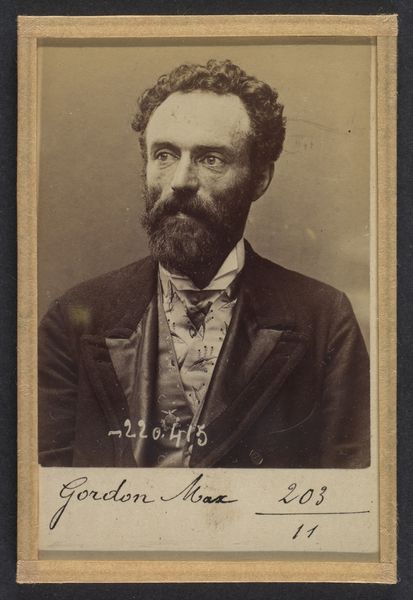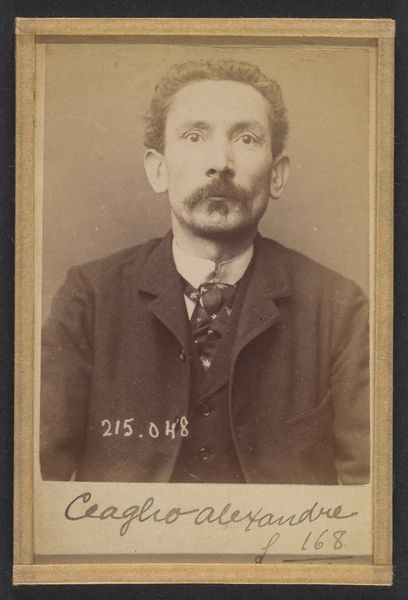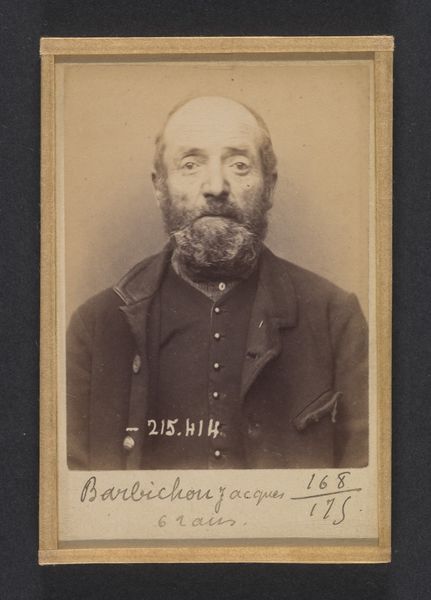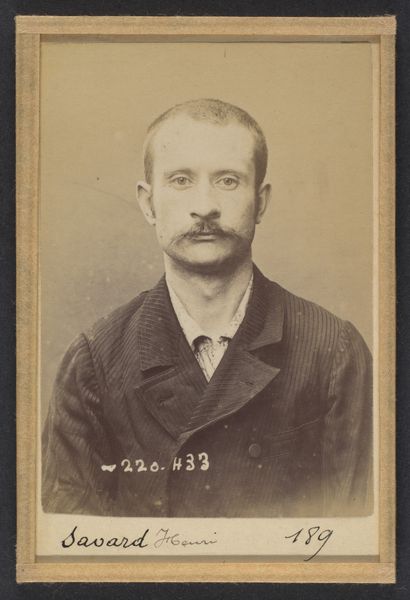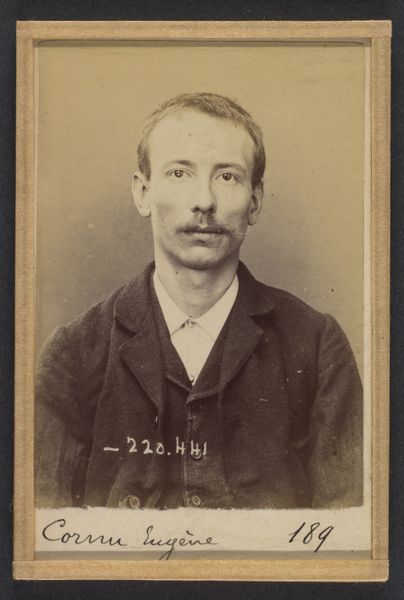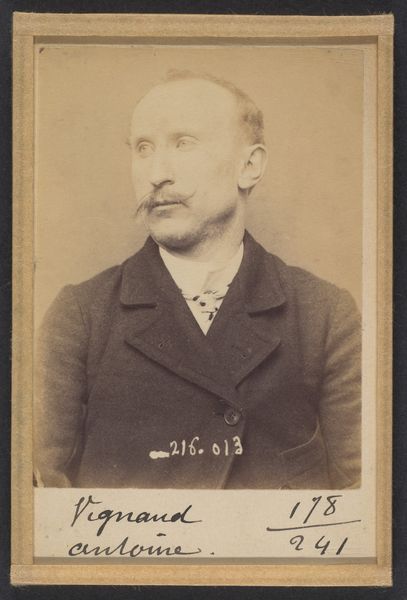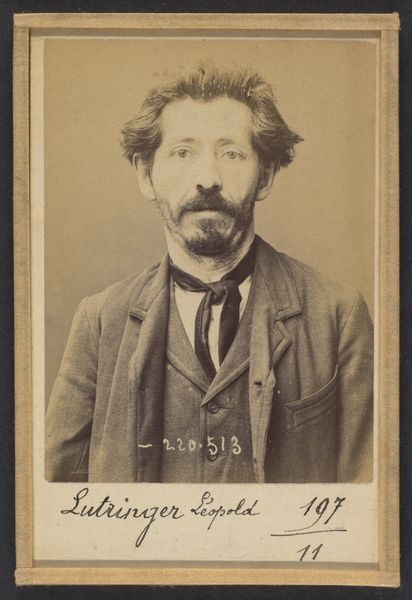
photography, gelatin-silver-print
#
portrait
#
portrait
#
photography
#
gelatin-silver-print
#
realism
Dimensions: 10.5 x 7 x 0.5 cm (4 1/8 x 2 3/4 x 3/16 in.) each
Copyright: Public Domain
This is an albumen print made in France by Alphonse Bertillon, dated March 7th, 1894. But this isn't art for art's sake, it's part of a criminal record. Bertillon was a French police officer and biometrics researcher who pioneered the use of photography to document and identify criminals. This mugshot of Rampin Pierre reflects the late 19th-century obsession with scientific categorization and social control. Bertillon developed a system of anthropometry, meticulously measuring body parts to create unique identifiers. Photography became a crucial tool, fixing the criminal's likeness for posterity. Consider the power dynamics at play: the state capturing and archiving individuals deemed deviant. The development of photography and its use in law enforcement is intertwined with broader anxieties about urbanization, industrialization, and social unrest. To fully understand this image, we need to delve into the history of criminology, the rise of photography, and the social context of Belle Époque France. Only then can we appreciate the complex meanings embedded within this seemingly simple portrait of Rampin Pierre.
Comments
No comments
Be the first to comment and join the conversation on the ultimate creative platform.
